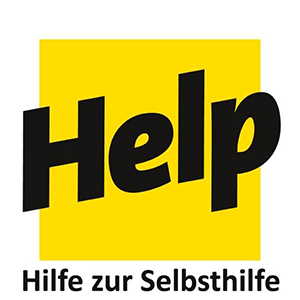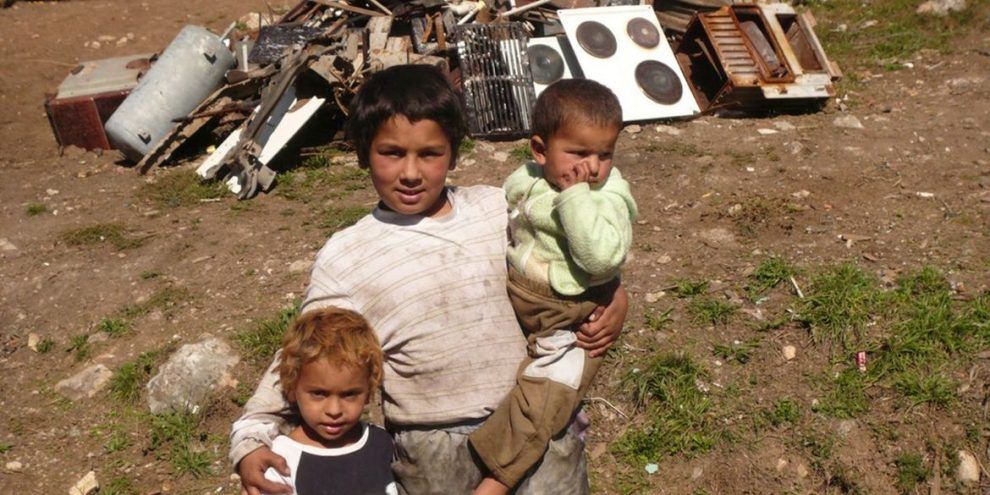:: PROJECT
Mon – 19 Construction of communal Infrastructure in Zagoric & Zlatica
:: DONOR
German Ministry of Economic Cooperation and Development, City of Pdg.
:: REALISATION / BUDGET
June 2002. to December 2002 :: € 730.000
:: SHORT DESCRIPTION
After the end of the the regime of Slobodan Milosevic in October 2000 and the formation of a new democratically legitimated government of Serbia in January 2001 remained open the question of the future of the common state of Serbia and Montenegro – apart from the situation in Kosovo! Through the mediation of the European Union’s Foreign Policy Advisor, Javier Solana, the governments of Serbia and Montenegro have agreed in March 2002 (Belgrade agreement) that the two republics will form a common state called Serbia and Montenegro. The parliaments of Serbia and Montenegro have ratified the constitutional charter for this new state end of January 2003. The clarification of the political status is also important for the economic development of Montenegro. Its economy is still burdened by enormous problems. After the return of the Kosovo-Albanians most of Kosovo’s Serb, Montenegrin and other non-Albanian population including large numbers of Roma had to leave their homes and sought refuge in Serbia and Montenegro. Apart from the 14.418 Croat and Bosnian refugees residing in Montenegro there are approximately 29.400 displaced from Kosovo still living in this republic.
Given the present situation in Kosovo the return of its displaced population remains a politically sensitive issue. To return in safety to their homes in Kosovo is not possible. Hence, a large part of the Kosovo’s displaced Serb and Montenegrin population as well as the refugees from Bosnia and Croatia, are undertaking efforts to integrate into the Montenegrin society. The government of Montenegro reckons that most displaced persons and refugees will remain in the country. However, the influx of refugees and displaced persons burden public services in Montenegro and in its capital of Podgorica where many new arrivals hope for better chances to set up their new lifes.
Many of the displaced have been received by relatives or friends and live now together with them under narrow conditions. Others have used their small savings they were able to rescue and started building their own dwelling. In most cases this was just enough to construct a simple one or two-roomed house. Most of them do not dispose of insulation or proper flooring. Sanitary installations lack completely and so do water and electrical installations. Conditions are especially abhorrent in Podgorica which is host to some 12.250 refugees (2.900) and displaced persons (9.350). The roads leading to one of the displaced settlements are muddy and almost inaccessible as soon as there is even just a small rain. Many of the houses in these settlement called Zagoric and Zlatica are without roof, some without window glas and doors. They can hardly provide protection from the influence of bad weather. The lack of sanitary installations is a permanent threat for the health of its inhabitants. In addition the septic tanks that the inhabitants of Zagorica have built are a permanent and serious threat for the supply of drinking water of some 30.000 inhabitants of Podgorica as this settlement is in the immediate vicinity of one of the town water reservoirs.
Living conditions are extremely poor and do not allow for a humane and dignified life. A durable solution can only be achieved if the housing situation in these settlements can be regularised and connected to the public utilities such as water, electricity etc. The prerequisite to do so is to establish the sanitary and hygienic conditions which fulfill the needs of the inhabitants of both settlements and town people. Of particular importance is the fact that most of the houses in Zagoric were built on public ground without the proper legal permits. However, with 500 to 700 houses built this problem has reached proportions that the city’s administration – also for political reasons – cannot tackle on its own. The administration has now agreed to regularise most of the present dwellings in Zagoric and Zlatica under the condition that the settlement can be connected to the city’s sewage system.
It is intended that the construction of the sewage collector will in the long run improve the living conditions of the inhabitants in Zagoric and Zlatica in Podgorica, among them some 1.100 displaced persons from Kosovo and 700 refugees from Bosina and Hercegovina. In total some 15.000 inhabitants of these and bordering areas shall be able to dispose of their sewae in an adequate way. In addition, the source of drinking water for apprximately 30 percent of Podgorica (total number of inhabitants estimated at 170.000) that is located within the boundaries of Zagoric will be protected by this collector.
Concretely the following results are to be achieved:
– construction of the main sewage collector (3.1 km) for the area of Zagorica and Zlatica
– create the conditions to connect the houses of refugees and displaced (as well as of other socially disadvantaged persons) with the sewage system of Podgorica
– create the legal conditions for the legalisation of the bulk of the illegally erected houses and thus achieve durable housing and living solutions for displaced persons and refugees
– protect the drinking water source of approx. 30% of Podgorica’s inhabitants.
The construction of the sewage collector is the condition for the further development of the two settlements. In particular, it will create the legal condtions for the legalisation of the houses of refugees and displaced persons. This opens up longterm and legally secure perspectives for the people who were uprooted during the past wars and political developments in the Balkans.
City of Podgorica
Podgorica is the largest city in the Republic, having about one third of the total population and about one third of the number of refugee and DP population in the country. The city’s housing shortage is acute, as illustrated by the significant numbers of housing illegally built on municipal land (about 14-17,000 units), which house a sizeable segment of the refugee and IDP population. The housing stock more generally suffers from considerable lack of maintenance and dilapidation. The city additionally houses a large number of Roma families in sub-standard living conditions. In response to the pressure on the housing market the municipality, supported by the international community (particularly UNHCR and SDC), has provided for temporary (and some permanent) shelter support for the refugees, IDPs, Roma and other vulnerable groups. At the upper end of the housing market, private developers are currently responding to the housing shortage through the construction of apartment buildings, which will be accessible for purchase by high- and middle-income group clients.
Feasibility study
Together with the start of the construction of the sewage collector HELP in cooperation with the municipality of Podgorica carried out a feasibility study with the aim to establish an integrated development plan for the two settlements (municipal area upgrading project in Zagroric and Zlatica, Podgorica) . The Zagoric Zlatica area-upgrading project aims at the lower end of the market by regularising land tenure in these two major settlement areas in the city, currently housing some 3,000 families, of which some 20% are refugees and IDPs. The project comprises legalisation of land tenure, upgrading and extension of infrastructure, provision of housing improvement loans, and the generation of an estimated additional 1,000 housing plots (through “re-blocking”) for use by other locally needy families and refugees, for which the project will provide building materials packages. In regularising the land layout, the project will effectively protect environmentally sensitive areas, such as drinking water wells and woodlands (which are currently being encroached upon by the irregular settlement patterns). The beneficiary families will purchase their plots from the municipality through an instalment payment scheme. Building materials will be provided on credit with long-term repayment options.
The plan will be the basis for the normalisation of living conditions; it will include the construction of more public infrastructure (roads, schools, health facilities and the like). The study was finalised in October 2002. It is the municipality of Podgorica which financed this study – a clear indicator for the importance of this undertaking for the municipality given the tight financial situation in Montenegro in general as well as in its capital city Podgorica.
For its estimated 6000 illegal settlers and up to 20,000 structures that are not or only partially covered by building permits the Municipality in consultation with the international donors has embarked on a legalization and upgrading programme.
The area of Zagoric/ Zlatica with some 1000 ilegal settlers has been selected as the kick off for this programme. Within the area zone A and Zone B with some 64 hectares do house 680 illegal settlers families. A parcelling plan has been prepared that provides small plots for the poor and destitute settlers and larger plots for the more well to do.
Legalization terms for the poor and destitute are very soft with long term rental fees for the plots and reduced service charges. For those of the poor that have been able to secure a “fiducia” mortgage the plot will be sold at favorable terms, while reduced service charges have to be paid. Building material loans will be made available to finalise early the erected core houses.
The more well to do and speculators will be charged the real costs for plots and dwelling. Those wanting to have plots of over 300 m2 and dwellings over 200m2 will have to pay the set land price of € 62 per m2 and service charges at € 62 per m2 floor area.
The Pre-Plan with a more structurized parcelling pattern has created some 364 additional plots for individual and dual housing (305 plots with 551 housing units) and small plots/ rowhousing or apartments (58 plots with 105 housing units) for the economic weaker section of podgarica and the refugees and IDPs.
The 150 of the 305 plots for individual and dual housing that exceed 300 m2 plot size will be auctioned off and are expected to make commercial prices. For the remaining 214 plots the Municipality will select eligible candidates among its poor and destitute and from among the refugees and IDPs. The 4 locations destined for row houses (lamella) or appartments with 58 plots may be made available for NGO’s or Housing Cooperations, who may construct row houses or apartment buildings with low rental fees. For others lotteries will be held among eligible households as selected by the social welfare department. These plots will be made available with low rental fees for the land, with minimal land charges and building material credit, all covered under “fiducia” mortgage schemes.
For the execution of the legalization programme the General Plan of Podgorica and the Spatial Structure Plan for the Municipality will have to be reviewed. Additionally there are some city wide investments that are necessary for the functioning of the town as a whole, but also for the optimal operation of the services for the Zagoric/ Zlatica upgrading area.
Stability Pact for Southeastern Europe
The government of Montenegro and the Municipality of Podgorica have actively pursued continued support from the Stability Pact for this matter. Mr. Scepanovic, Montenegro’s refugee commissioner on 7 December 2001 had presented to an expert team of the Stability Pact’s Housing Committee a project request for the construction of the sewage collector. The Executive Secretary of the Stability Pact’s Steering Committee on Refugee Matters, Mr. Kilian Kleinschmidt, has fully endorsed this measure and lobbied for the financial support from the German government. The Stability Pact has expressed its continued willingness to sollicit additional external support for the overall development of the two areas. Unsatisfuied needs for adequate housing were identified by the Regional Return Inititative of the Stability Pact to be one of the most serious impediments to the implementation of sustainable solutions for displaced populations in Southeastern Europe. Lack of public and social housing was found to be equally affecting the stability of poor local populations slowing the overall socio-economic recovery process and hampering integration efforts.
German Ministry for Economic Cooperation and Development (BMZ)
In May 2002 the BMZ had appoved HELP’s application for funding of the main sewage collector. The start of the construction work in early July 2002 marks the first concrete steps in the normalisation of living conditions for refugees and displaced persons in the two areas as well as for its other inhabitants. It is hoped that it will also be the beginning of an well organised development of the areas.
The German government supports through its financial assistance a small county suffering from the results of the wars in the Balkans which undertakes great efforts to normalise the lives of its inhabitants. It also supports a project that could become expemplary for solving refugee and displaced persons’ related housing issues as it integrates refugee related housing into the overall housing policy of the municipality.



